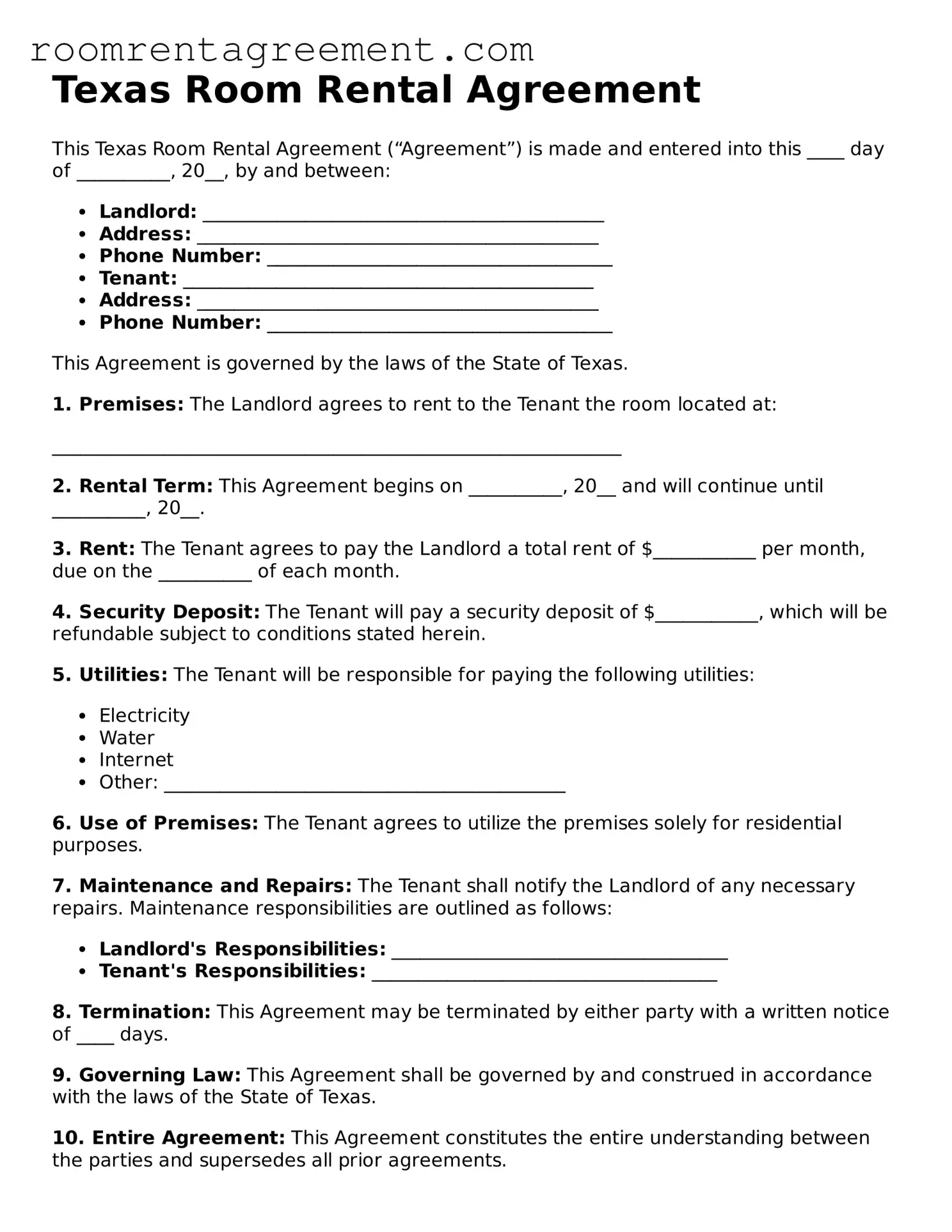More About Texas Room Rental Agreement
-
What is a Texas Room Rental Agreement?
A Texas Room Rental Agreement is a legal document that outlines the terms and conditions under which a tenant can rent a room from a landlord. This agreement specifies the rights and responsibilities of both parties, including rent payment, duration of the lease, and rules regarding the use of the property.
-
Who should use a Room Rental Agreement?
This agreement is beneficial for anyone renting a room in Texas, whether you are a homeowner renting out a spare room or a tenant looking to rent a room in someone else's home. It provides clarity and protection for both landlords and tenants.
-
What key elements should be included in the agreement?
The agreement should include the following:
- The names of the landlord and tenant
- The address of the rental property
- The rental amount and payment due dates
- The duration of the rental period
- Security deposit details
- Rules regarding maintenance, pets, and guests
- Termination conditions
-
Is a security deposit required?
A security deposit is not legally required in Texas, but it is commonly included in rental agreements. If a deposit is collected, the agreement should specify the amount, the conditions for its return, and any deductions that may apply.
-
Can the agreement be modified?
Yes, the Texas Room Rental Agreement can be modified if both parties agree to the changes. It is important to document any modifications in writing and have both parties sign the updated agreement to ensure clarity and legal validity.
-
What happens if one party breaches the agreement?
If either party fails to uphold their obligations under the agreement, it may be considered a breach. The affected party can seek remedies, which may include terminating the agreement, seeking damages, or pursuing legal action. It is advisable to review the specific terms of the agreement to understand the available options.
-
Where can I find a Texas Room Rental Agreement template?
Templates for a Texas Room Rental Agreement can be found online through various legal websites or local real estate offices. It is important to ensure that any template used complies with Texas laws and is tailored to your specific situation.
